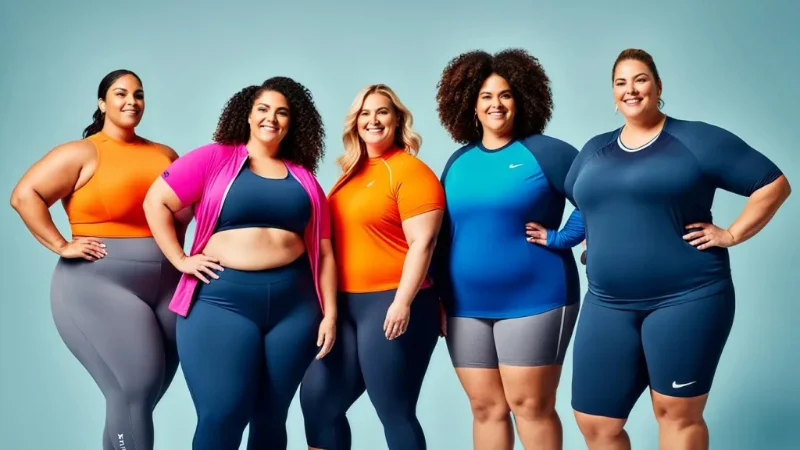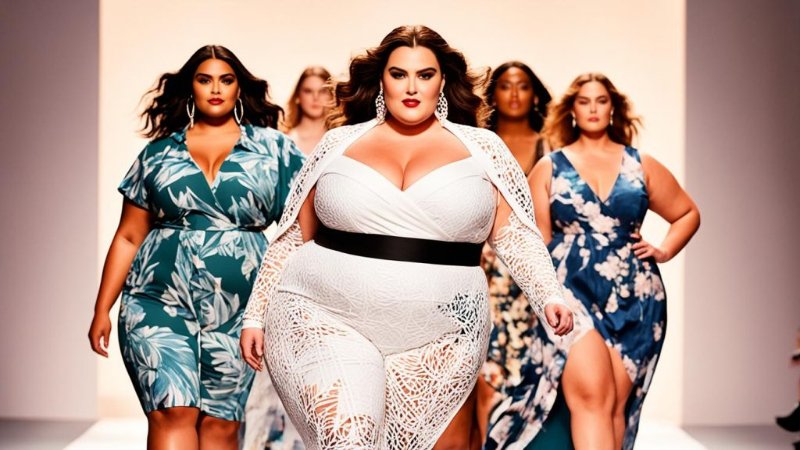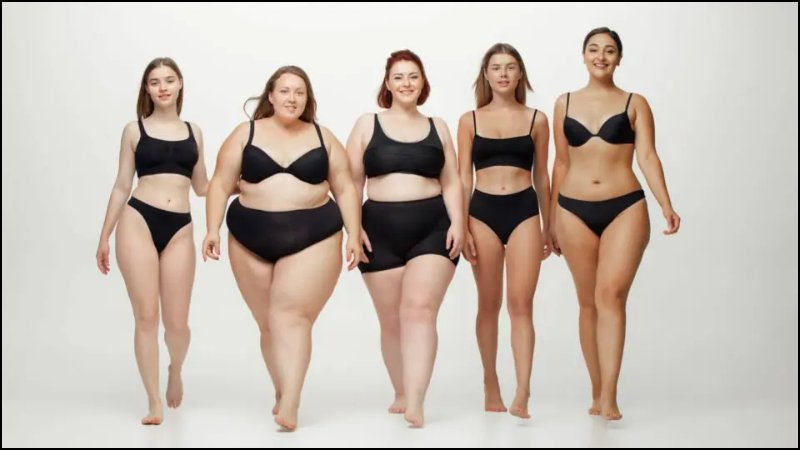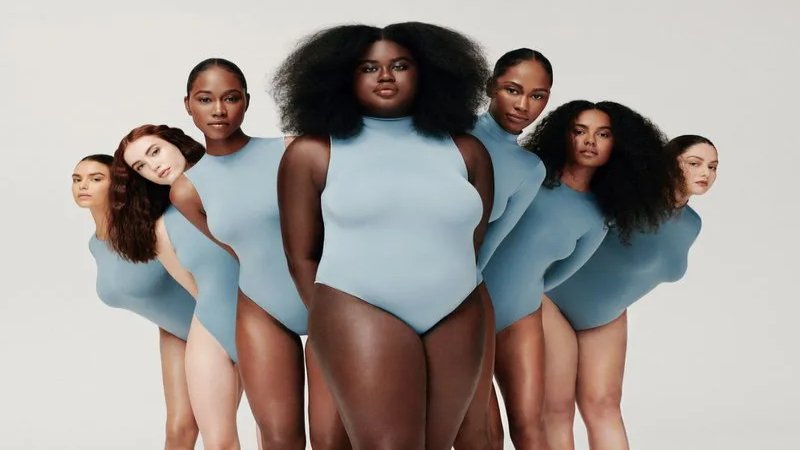Size Inclusivity Guide: Expand Your Clothing Brand
In today’s evolving fashion landscape, size inclusivity is no longer a trend it’s a necessity. This guide is for small clothing businesses, startups and growing brands ready to embrace body diversity and expand their reach. We understand the challenges: limited market reach, attracting a diverse customer base, and navigating the complexities of inclusive sizing. This is about business and it is ethical and customer-focused and helps your reputation.
1. Understanding Size Inclusivity in Fashion
Size inclusivity in fashion is a movement and a design philosophy centered on accessibility, representation and creating a welcoming experience for everyone, regardless of their size or body type. It’s about fundamental fairness and recognizing that beauty and style are not limited to a narrow range of sizes.
At its core, inclusive sizing means that clothes are equally available in a wide range of sizes, both in-store and online. This ensures that everyone can find garments that fit well and make them feel confident. It acknowledges and respects the diversity of body shapes and sizes in the real world, moving away from unrealistic and often unattainable beauty standards.
A key principle of size inclusivity is aiming to eliminate the distinction between “straight sizes” and “plus sizes,” offering unified sizing options whenever possible. This creates a more inclusive and less stigmatizing shopping experience. Ultimately, size inclusivity is about providing clothing that is considerate of all bodies and identities, promoting diversity, acceptance, and a sense of belonging in the fashion world.

2. What Size Inclusivity Truly Means (And What It Doesn’t)
2.1 Beyond Plus Size: The Holistic View
Size inclusivity extends far beyond simply offering “plus sizes.” It’s a holistic and comprehensive approach that encompasses a full spectrum of sizes and body types, from petite to tall, and everything in between. It’s about integration of all sizes into the core brand offering, treating every size as part of the mainstream, rather than an afterthought or a separate category.
It’s a genuine commitment and it must show authenticity. This means it’s not separate. It requires fundamentally rethinking your sizing strategy to be inclusive from the design stage onward.
2.2 Size Inclusivity vs. Plus Size: Key Differences
While “plus size” clothing is undoubtedly important, it’s distinct from “size inclusivity.” The term “plus size” can sometimes feel exclusionary, categorizing larger sizes as “other” or separate from the standard range. Size-inclusive brands strive for integration.
They integrate all sizes seamlessly into their collections, website layouts and in-store displays, creating a unified shopping experience. The focus is on making the shopping experience feel equitable, respectful and non-discriminatory for everyone, regardless of their body shape or size.
3. Why Size Inclusivity is Crucial for Modern Clothing Brands
3.1 Celebrating Body Positivity and Self-Love
Size inclusivity is deeply intertwined with the body positivity movement. It directly supports body positivity, acceptance and self-acceptance. By offering clothing that fits and flatters a wide range of body types, brands contribute to challenging beauty standards that are harmful. It has positive impact for customers. It is ethical fashion and shows social responsibility.

3.2 Addressing the Lack of Representation in Fashion Media
Fashion media and advertising have historically overrepresented extremely slim body types, creating unrealistic and often unattainable beauty standards. Authentic representation is important. Size inclusivity challenges this imbalance by showcasing diverse body types in marketing campaigns, website imagery and social media content. This promotes realistic representation and makes fashion feel more accessible to a broader audience.
3.3 Moving Beyond Outdated Beauty Standards
Traditional fashion design has often centered around a narrow range of “standard” sizes, effectively excluding a significant portion of the population. Size inclusivity means fundamentally rethinking this approach and designing for all bodies, not just a select few. It’s about adopting a customer-centric approach that prioritizes fit and flattery for a wide range of body shapes and sizes.
3.4 Combating Tokenism with Authentic Diversity
True size inclusivity goes beyond tokenism. It’s not enough to simply include one or two larger models in a campaign and call it a day. Authentic representation requires a genuine commitment to diversity and inclusion across all aspects of the brand, from product design to marketing and customer service. It’s about consistent and meaningful representation, not just performative gestures.
3.5 Challenging Toxic Attitudes and Promoting Health
The fashion industry has, at times, perpetuated toxic attitudes about body size and shape, contributing to negative body image and unhealthy behaviors. Size inclusivity plays a vital role in creating a more positive fashion culture. And healthy body image that values well-being and diversity over unrealistic ideals. It is part of social responsibility in ethical fashion.
3.6 Fighting Body Dysmorphia and Promoting Self-Esteem
The lack of size representation and the prevalence of unrealistic beauty standards can contribute to body dysmorphia and low self-esteem. Size inclusivity has a positive impact and promotes self-esteem and body confidence by making fashion more accessible and welcoming to everyone. It sends a powerful message that all bodies are worthy of beautiful, well-fitting clothing.
3.7 The Problem with “Standard” Sizes and Why They Need to Evolve
The concept of “standard” sizes in the fashion industry is fundamentally flawed and increasingly outdated. It’s a system that fails to reflect the beautiful diversity of human bodies and creates unnecessary barriers to participation in fashion. “Standard” sizes are based on outdated sizing and limited body measurements, often derived from data that doesn’t accurately represent the current population. They create a false sense of uniformity, attempting to fit a vast array of body shapes and sizes into a small number of predefined categories.
The reality is that bodies are incredibly diverse and cannot be accurately categorized by a simple number or letter. The “standard” size system is inherently exclusionary, acting as a gatekeeper, dictating who “fits” into fashion and who feels left out.
This standardization can lead to a negative shopping experience, frustration, and even damage to self-esteem. A more customer-centric and personalized approach is needed, one that recognizes and celebrates the individuality of each body.
4. Business Benefits: Why Size Inclusivity Makes Financial Sense
4.1 Positive Brand Perception and Audience Response
In today’s market, consumers are increasingly drawn to brands that demonstrate strong values and a commitment to social responsibility. Size inclusivity resonates powerfully with this sentiment. By embracing size inclusivity, you build a positive brand image and enhance your brand reputation. This fosters customer loyalty, encourages positive word-of-mouth marketing and strengthens audience engagement.
4.2 Gaining Consumer Trust and Meeting Modern Expectations
Modern expectations are that brands be ethical, inclusive and socially responsible. Size inclusivity is a clear demonstration of these values, building consumer trust and aligning with evolving consumer demand and market trends.
Transparency in sizing, representation and communication further enhances this trust. Consumers appreciate honesty and a genuine commitment to inclusivity. Show ethical business practice, brand values and social responsibility.

4.3 Unlocking Untapped Market Potential and Financial Growth
The plus size clothing market is a substantial and rapidly growing segment, representing a significant untapped market opportunity for clothing brands. Size inclusivity allows brands to access this market growth potential, significantly expanding their customer base and reaching a wider audience. Offering a wider range of sizes, including extended sizes, can directly translate to increased sales, revenue and overall profitability.
5. Actionable Steps: How to Make Your Clothing Brand Size-Inclusive
5.1 Offer a Broad and Truly Inclusive Size Range
The foundation of size inclusivity is offering a size range that caters to a diverse range of body types. Start by researching the average size of your target market demographic. This will give you a baseline for your sizing. Consider offering extended sizes beyond the typical “straight size” range.
5.2 Showcase Models of Diverse Sizes in Your Marketing
Visual representation is crucial. Show your customers that your clothing looks great on all body types. Feature diverse models of various sizes, shapes and backgrounds in your product photos, website banners, and social media content. Ensure this diversity is visible across all marketing strategies, not just in a separate “plus size” section.
5.3 Provide Clear and Accurate Sizing Charts and Measurement Guides
Clear and accurate sizing information is essential for helping customers find the right fit, reducing returns and building trust. Include detailed size chart with both garment measurements and body measurements. Provide clear instructions on how to measure oneself accurately. This information is vital for a good user experience on your online store or any e-commerce site.

5.4 Integrate Size Inclusivity into Your Brand Marketing and Messaging
Your commitment to size inclusivity should be woven into the fabric of your brand messaging and marketing strategies. Highlight your size range and commitment to inclusivity in your brand story, “About Us” section, and across all advertising campaigns. Feature diverse models and body types prominently in your marketing materials. Use customer communication to show brand values.
6. Implement Size-Inclusive Pricing
6.1 Ethical and fair pricing is a cornerstone of size inclusivity
Ensure that clothing items are priced the same regardless of size. Avoid charging more for larger sizes. This practice is discriminatory and undermines the principles of inclusivity. It is about customer fairness and ethical business practice. Choose an inclusive pricing, ethical pricing and fair pricing for your pricing strategy.
6.2 Focus on Consistent Fit Across All Sizes, Not “Standard” Sizing
As previously discussed, “standard” sizing is a myth. Your focus should be on achieving consistent fit and quality across your entire size range. Invest in thorough fit testing on diverse body types during the design process and product development. Ensure consistent garment measurements and fit across all sizes offered.
6.3 Beyond Standard Sizing: Exploring Further Dimensions of Inclusivity
While offering a wide range of sizes is fundamental, true inclusivity extends beyond simply expanding the numerical size range. It’s about recognizing and catering to the diverse needs and diverse body types of all individuals.
Consider offering specialized fit options, such as:
- Petite sizes: Designed for shorter individuals, typically 5’4″ and under, with adjusted proportions.
- Tall sizes: Designed for taller individuals, with longer lengths in sleeves, torsos, and inseams.
- Curve sizes: Specifically designed to fit curvier body shapes, with adjustments in the bust, waist, and hip areas.
Explore adaptive clothing designs. These are garments specifically designed for people with disabilities, featuring modifications like easy closures, adjustable openings, and sensory-friendly fabrics. Think beyond traditional gendered clothing categories. Offer unisex clothing or non-binary fashion styles that are not restricted by conventional gender norms. This promotes accessibility and allows individuals to express themselves authentically.
7. FAQs about Size Inclusivity for Clothing Brands
7.1 What is the first step a clothing brand should take to become more size-inclusive?
The first step is to assess your current size range and analyze your customer demographics. Research the average size of your target market and identify any gaps in your current offerings. Begin by expanding your size range incrementally, focusing on your most popular styles and gather customer feedback to guide further expansion.
7.2 How can small clothing businesses afford to offer a wider size range?
Offering a wider size range doesn’t have to break the bank. Start with your most popular styles and expand the size range for those first. Prioritize key pieces and expand gradually. Consider using pre-orders to gauge demand for extended sizes before committing to large production runs. Focus on efficient inventory management to minimize waste.
7.3 What are some common mistakes brands make when trying to be size-inclusive?
Several common pitfalls can undermine a brand’s efforts. These include tokenism in marketing (superficial representation without genuine commitment), inconsistent fit in extended sizes (simply scaling up from a smaller size), charging more for larger sizes (size-exclusive pricing), and not genuinely integrating size inclusivity into their brand values and overall strategy.
7.4 How can I ensure consistent fit across all sizes in my clothing line?
Consistent fit requires careful attention to pattern grading and fit testing. Invest in proper pattern grading, working with experienced pattern makers who understand how proportions change across different sizes. Conduct thorough fit testing on diverse body types, not just a single fit model. Don’t simply scale up or down from a “standard” size; each size should be developed and tested individually.
7.5 How do I market my brand as size-inclusive without sounding disingenuous?
Authenticity is key. Focus on genuine representation in your marketing materials, showcasing diverse models and real customers wearing your clothing. Let your actions speak louder than words. Integrate inclusivity into your brand story and core values, and ensure your commitment is reflected in all aspects of your business from product development to customer service. Highlight your size range and the steps you’re taking to be inclusive but avoid performative activism or empty pronouncements.
8. Packlove – Providing Labeling & Packaging Solutions for Size Inclusive Brands
Packlove understands the unique needs of size-inclusive clothing brands. We specialize in providing high-quality labels, tags, zipper bags, and poly mailers that support your commitment to diversity and accessibility. We recognize that every detail, from the garment itself to the packaging it arrives in, contributes to your brand image and customer experience. We are experts in providing labeling and packaging solutions that align with your brand values.
We offer:
- Size Labels and Tags: Clearly and accurately represent your extended size range, ensuring easy identification for both your team (during fulfillment) and your customers. We can incorporate international size conversions and any other necessary information.
- Zipper Bags and Poly Mailers: Durable and appropriately sized packaging is crucial. We offer a variety of zipper bag and poly mailer sizes to accommodate garments of all sizes, ensuring secure and professional delivery, protecting your clothing and maintaining a consistent brand presentation.
Packlove is committed to supporting brands that prioritize inclusivity and ethical practices. We believe that every customer deserves to feel valued and represented, and we’re here to help you make that a reality.
Read more:
This comprehensive guide has explored the multifaceted nature of size inclusivity in the fashion industry. From defining its core principles to outlining actionable steps for implementation, we’ve emphasized that size inclusivity is not just a trend, but a fundamental shift towards a more ethical, representative, and ultimately, profitable way of doing business.






















